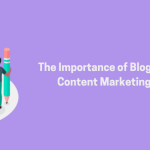Table Of Content
Google is the first place where people turn to whenever they need a solution to their problems. Therefore, your business may not survive for long if it is not present on Google. Content optimization is the best way forward to build your presence online.
You need to understand the meaning of SEO and how it works. The secret is knowing what you need to do to put yourself in the right position in the search engines. Unlike other guides, this one is simple and will not confuse you about search engine optimization.
The best starting point is to understand the various components of SEO and how all the elements work together in the construction of a successful strategy.
Meaning of SEO:
The primary focus of SEO is to enhance the visibility of your brand in the organic search results. It helps your pages to rank highly in the Search Engine Result pages. It is the best way to increase the number of visitors on your web pages and hence more conversions.
Thus, we can define SEO as a strategy that will make sure that people will find your website when they search for your product or services categories. In short, content optimization drives two things: visibility and ranking.
Both ranking and visibility play a critical objective in delivering the objectives of content optimization. The ranking is the process that the search engine uses to determine where it will place your web pages in the SERPs.
On the other hand, visibility describes the prominence of a given domain in the search engine results. Your domain will be more prominent on the SERPs if it has high visibility. If your domain is not visible for the most appropriate search queries, it has low search visibility.
According to Google, customer behavior keeps on changing over time. SEO is critical as it will make sure that the marketing strategies that you use match the current buying behavior. The number of people who are using search engines to find products and services is higher than ever.
People prefer to engage with the search engines before they interact with your brand. Most consumers want to go through the whole purchase journey on their own. Therefore, online customer experience is something you cannot overlook if you’re going to attract and retain customers.
How Google Knows How to Rank Web Pages:
The primary objective of search engines is to give users the most relevant information and users. As a person uses the search engine, the algorithm selects pages that are most relevant to his or her query. The system will rank the pages and display the most popular and authoritative ones at the top.
Some of the factors that the search engines assess are keywords and topic. There should be relevancy between the content that is on your page and the search query.
Authority refers to the popularity of your website on the internet. According to Google, popular resources or pages have more valuable content for readers. Search algorithms are complex equations that are used to analyze this information.
The challenge with search engines is that they keep their algorithm as a secret. However, content optimization professionals are top on the game. These experts identify some of the factors that Google looks at when ranking your pages.
The primary focus of any SEO strategy are these ranking factors. Some of the factors that affect your visibility and ranking are improving internal links, optimizing image filenames, and adding more content.
The Main Components of a Strong Content Optimization Strategy:
1. Technical Setup:
For your website to rank, the search engine must find your web pages online. The second thing it does is to scan them to identify their keywords and understand their topic. The last thing is adding them to its index.
If your website meets the above criteria, the algorithm will consider displaying your site for relevant quarries. Google should not have a problem with visiting your website. The search engine sees all elements like text and you have to make sure that they are visible.
Several factors influence the ranking of websites in the search engine. Some of them include website navigation and links, simple URL structure, page speed, broken redirects and dead links, robots.txt files and sitemaps, and duplicate content.
You have to make sure that you understand how all the above factors influence your content optimization efforts. With all this in place, it will be easy to conduct a technical SEO audit and take all the desired corrective actions.
2. Content:
Each time a person uses the search engine, he or she is looking for content. The term content basically refers to information on a particular problem or issue. Content comes in various formats like text or a web page, business listing, product recommendation, or video.
All the above formats and content and SEO will help you to gain greater visibility. First, content is what customers look for when doing a search. As you continue to publish more content, you will increase your visibility in the search engine.
When Google crawls a page, it will begin by determining its topic. It also analyses various elements like the structure and length of a page to evaluate its quality. The search algorithms will then match the query of the person with the web pages that they consider to be most relevant.
3. Keywords:
The process of content optimization begins with a keyword search. SEO is not only about attracting visitors to your website. You have to attract individuals who require the products or services that you are selling. It will help you to convert them into leads and later on customers.
Therefore, you have to make sure that the search engine ranks your website for relevant keywords. If not, there is no possibility that any of them will get you online.
Therefore, content optimization begins by looking for the phrases that your potential buyers enter in the search engine. You have to identify the topics and terms that are relevant to your niche. In addition to these keywords, you need to search for related terms that your audience may wish to use.
4. On-Page Optimization:
On-page SEO or optimization will make sure that the search engine will understand the keywords and topics of your web pages. It uses this information to match it to the relevant searches.
Some of the elements of on-page SEO include keyword optimization, post’s title, URL, H1 tag, meta title, and description tags, and image file names & ALT tags. You can also go for on-page optimization that is not keyword related. These include internal and external links, content lengths, and multimedia.
Content is the main determining factor of SEO.
5. Links:
From our previous discussion, your page requires authority and relevance to rank. Content optimization and technical setup increase the relevancy of your website. On the other hand, links increase the popularity of the website.
The references of your web content on other sites are called backlinks. When other people mention your website in their content and include the link to your site, you will gain a backlink. Google pays close attention to the quality of the links.
Webmaster reference high-quality and popular websites over mediocre ones. Low-quality links will have a negative effect on the ranking of your website. You need to attract natural links without forcing your way out.
Some of the things Google looks at are how popular is the linking site, trust in a domain, and topic relevance. Link building is the process of acquiring new links. It is one of the factors that support content optimization.
We cannot run away from the fact that link building is a challenging endeavor. It calls for a high level of patience, strategic thinking, and creativity. You need a good link building strategy to come up with high-quality links.
Editorial or organic backlinks come from those websites that reference your web content on their own. Besides, you can contact other sites for links through outreach. Create an amazing piece of content and send it to the authority figures in your niche. If they find out that it is valuable, you can be sure that they will refer back to it.
The third link-building strategy is guest posting. The process entails posting blog posts on third-party websites. Include one to two links to your website in the author bio and content.
You can also use profile links to generate new links. Several websites will give you the opportunity of creating a link. When you set up these profiles, you can include your profile there. The good news is that it is not hard to create such links.
The last thing is the competitive analysis. You need to analyze the backlinks that your competitors are getting to know the ones that you will recreate for your website.
Therefore, link building is an important element in content optimization. Once you do this, you need to figure out whether your strategies are working or not.
Read more: How to Get High-Quality Backlinks from Blogger Outreach
6. Monitoring and Tracking SEO Results:
Content optimization, technical setup, and links all play a critical role to get your website in the search results. You can improve your strategy further by monitoring your results.
To measure your SEO results, you need to track data about links, engagement, and traffic. You can develop your SEO KPIs for your brand. However, the most common ones include;
- Keyword rankings
- Organic traffic growth
- The bounce rate and average time on the page
- Conversion from organic traffic
- Growth of links
- Number of indexed pages
- Top landing pages that attract organic traffic
7. Local SEO:
In the above content, we have been looking at how you can get your website rank in the search engines. However, if you are operating a local business, Google allows you to position your brand in front of potential clients in your region by using local SEO.
A large proportion of clients find local information from search engines. You will find them looking for specific business information and vendor suggestions from the local search engines. In fact, these customers search for local information daily.
75% of the searchers act on this information within 24 hours. Therefore, it is crucial to include local SEO in your strategy if you want to gain a competitive advantage.
Search engines use the same principles for both global and local rankings. However, they position sites for specific and local-based results. Thus, they analyze other ranking factors for local SEO.
Local search results only appear for the searches that have a local intention. A good example would be ‘salon near me’ or when a person provides a clear definition of a location. Someone would say something like ‘best hair salon in Brighton, MI.’
Therefore, the use of keywords that target the local residents should be part of your strategy. You have to give users specific information so that they don’t go anywhere else.
Most local searches take place on Smartphones and hence you need to target local users. When a person searches for local business, the results will not have links to any content. Instead, you will get a list of relevant businesses in the region, a map for business location, and more information about each brand.
You will get the business name, address, opening hours, stars reviews, image, and description. You will also get the website address and phone number of the company. This info will help the client to choose the best business.
The above info also helps Google to determine how it will rank your business. The most important thing is to determine the local search ranking factors.
One of the most important elements for local SEO is relevant keywords. Google tries to rank the closest business at the top. The presence of the company’s name, address, and phone number (NAP) is also a critical component of on-page optimization.
Remember the search engine is looking for the best way to access your company information. Apart from links, Google also uses citation and reviews to highlight its authority in the local searches.
The last thing is the information that you include in Google My Business for your brand. The platform of the search engine for the management of local business listings plays a critical role in the ranking. In summary, content optimization is critical in ranking your business locally.
Conclusion:
With all this information, you have all it takes to manage your content well and rank highly both locally and globally. However, make sure that your content optimization strategy does not use black hat SEO as this ends up in penalties.
There is no need to use strategies that are against the guidelines of the search engine to try and manipulate the system. Some of the black hat techniques are keyword stuffing, buying links, and cloaking. Using organic SEO to rank your site takes time but it’s good to be patient as the results will be long-lasting.
If Google catches you trying to deceive the search engine, it will wipe your site out from the search engine. Therefore, content optimization has no shortcuts. Only use the recommended strategies and you will succeed.
Looking for an excellent content optimisation strategy for your brand? Don’t hesitate to reach out to us for the best results.
Read Also:







